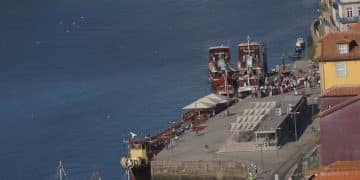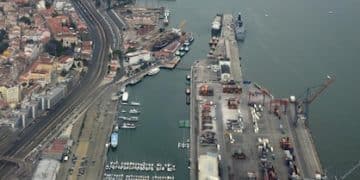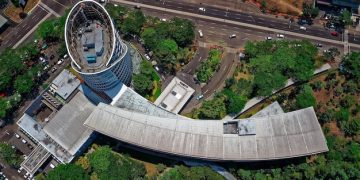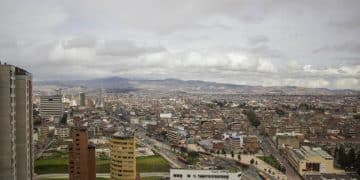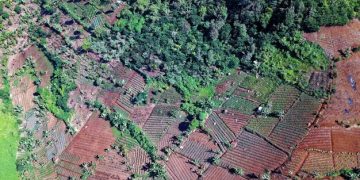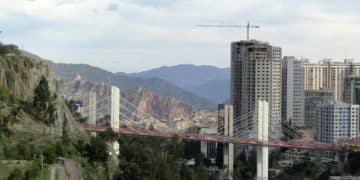Unpacking Peru’s Cabinet Reshuffle: Implications for US Foreign Policy
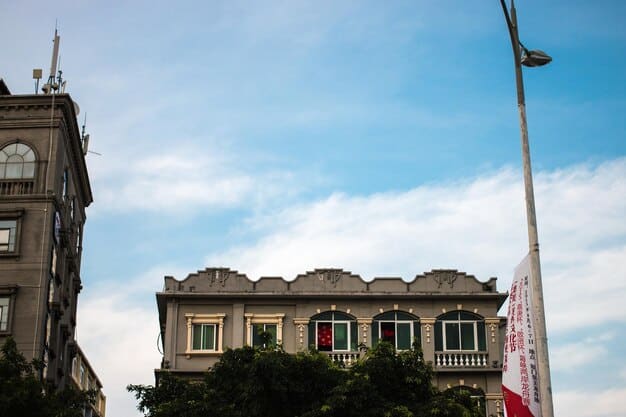
The latest Peruvian cabinet reshuffle introduces uncertainty into Peru’s political landscape, potentially impacting US foreign policy by prompting a reassessment of bilateral relations, trade agreements, and strategies for regional stability.
The recent cabinet reshuffle in Peru has sparked considerable interest, particularly regarding its potential impact on US foreign policy. Understanding the dynamics of this reshuffle is crucial for deciphering the future trajectory of US-Peruvian relations. This article aims to explore the key implications of this political event.
Understanding Peru’s Political Landscape
To fully grasp the implications of the cabinet reshuffle, it’s essential to understand the broader political context of Peru. This involves examining the structure of the Peruvian government, key political players, and the recent history of political instability that has plagued the nation.
Peru’s political scene has been marked by volatility and frequent changes in leadership, affecting the nation’s stability and its international relations. Key political figures often clash, leading to government instability and policy inconsistencies.
The Structure of the Peruvian Government
Peru operates under a presidential representative democratic republic. The government is composed of three branches: the executive, legislative, and judicial. Understanding each branch’s role helps clarify the context of the cabinet reshuffle.
The executive branch, headed by the President, is responsible for implementing laws and policies. The legislative branch, the Congress of the Republic, is responsible for enacting laws, while the judicial branch interprets and applies the laws.
Key Political Players in Peru
Identifying prominent figures in Peruvian politics is crucial for analyzing the potential directions the country might take after the reshuffle. These leaders often have distinct ideologies and agendas that shape policy.
Understanding their relationships, both collaborative and competitive, sheds light on the motivations and potential outcomes of political maneuvers. Key players include not just the President but also influential members of Congress and leaders of major political parties.
Recent History of Political Instability
Peru’s recent political history has been turbulent, characterized by corruption scandals, impeachment attempts, and frequent changes in government. This instability has had significant repercussions on the country’s economic and social development.
Numerous administrations have been marred by controversies, contributing to a sense of uncertainty among both domestic and international observers. The cabinet reshuffle is just one event in a series of ongoing political shifts.
In conclusion, understanding Peru’s political landscape is critical for assessing the potential effects of the cabinet reshuffle on US foreign policy. The structure of the government, key political players, and the history of instability all provide context for understanding the recent changes and their likely implications.
Decoding the Cabinet Reshuffle
A cabinet reshuffle typically occurs when a head of state or government decides to change the composition of their cabinet, often due to political pressures, policy disagreements, or the pursuit of new strategic priorities. Understanding the specific reasons behind the recent Peruvian cabinet reshuffle is vital for interpreting its broader significance.
Several factors may have contributed to the decision to reorganize the cabinet, ranging from internal political dynamics to external pressures.
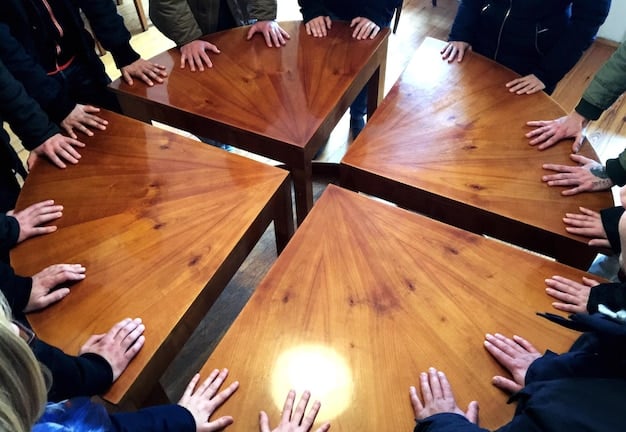
Reasons for the Reshuffle
The rationale behind the cabinet reshuffle can be multifaceted. It may stem from a desire to address public concerns, improve governance, or consolidate political power.
Internal political conflicts or a need to refresh the government’s approach to pressing issues can also trigger such changes. Examining official statements and expert analyses can provide further insights into the underlying reasons.
Key Appointments and Departures
Identifying who was appointed and who was removed from the cabinet is essential for understanding the direction the government intends to take. New appointments can signal new policy priorities.
Departures may indicate dissatisfaction with previous policies or a change in political alliances. Analyzing the backgrounds and affiliations of the new and former cabinet members can reveal strategic shifts.
Potential Policy Shifts
A cabinet reshuffle often leads to alterations in government policies. New ministers may bring different perspectives and priorities, leading to changes in how various sectors are managed.
Areas such as the economy, foreign affairs, and social programs are particularly susceptible to shifts following a cabinet reshuffle. Understanding these potential policy shifts is critical for predicting the government’s future actions.
- Economic policies might be adjusted to attract foreign investment.
- Foreign affairs may see a renewed focus on regional partnerships.
- Social programs could be reformed to address inequality.
In summary, decoding the cabinet reshuffle involves understanding the reasons behind it, the key appointments and departures, and the potential policy shifts that may result. This analysis provides a foundation for assessing the broader implications for US foreign policy.
US-Peruvian Relations: A Historical Overview
The United States and Peru have maintained a relationship characterized by periods of cooperation and occasional tension. Understanding this history is crucial for interpreting how the cabinet reshuffle might affect future interactions between the two countries.
Historically, economic and security interests have often shaped their interactions, but recent political changes in Peru have introduced new complexities.
Key Areas of Cooperation
US-Peruvian relations have historically centered on several key areas. These include trade, security, and combating drug trafficking.
Trade agreements have facilitated economic exchange, while security cooperation has focused on regional stability. Efforts to combat drug trafficking have been a consistent priority for both nations.
Points of Contention
Despite the areas of cooperation, there have also been points of contention in the relationship. These disagreements have often revolved around issues such as human rights, environmental policies, and economic disparities.
Differences in political ideologies and approaches to governance have also contributed to tensions. Understanding these points of contention is essential for anticipating potential challenges in the future.
Impact of Previous Political Changes
Past political changes in Peru have often had a ripple effect on its relationship with the United States. These shifts have led to reassessments of bilateral agreements and adjustments in foreign policy strategies.
Previous administrations’ stances on key issues have influenced how the US perceives and interacts with Peru. The current cabinet reshuffle is likely to follow this pattern, prompting a new evaluation of the relationship.
In conclusion, a historical overview of US-Peruvian relations reveals a complex dynamic shaped by cooperation and contention. The impact of previous political changes underscores the importance of understanding the historical context when assessing the potential effects of the latest cabinet reshuffle.
Economic Implications for the US
Peru’s economic stability and policies directly affect US economic interests in the region. The cabinet reshuffle could lead to significant shifts in Peru’s economic priorities, potentially impacting trade relations, investment opportunities, and overall economic cooperation between the two nations.
These shifts could present new opportunities or challenges for US businesses and investors.
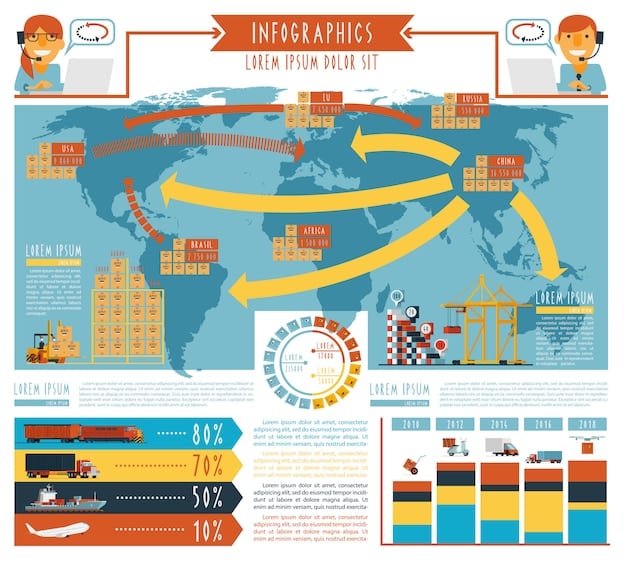
Trade Relations
Trade relations between the US and Peru are governed by various agreements that facilitate the exchange of goods and services. Changes in Peru’s economic policies could alter these dynamics.
New tariffs, regulations, or trade priorities could affect the volume and composition of trade between the two countries. Monitoring these changes is crucial for businesses engaged in international trade.
Investment Opportunities
Peru offers numerous investment opportunities for US companies across various sectors, including mining, agriculture, and infrastructure. The cabinet reshuffle could impact the attractiveness of these investments.
Changes in regulations, tax policies, or security conditions could either encourage or discourage foreign investment. Assessing these factors is essential for investors considering opportunities in Peru.
Overall Economic Cooperation
The US and Peru have engaged in economic cooperation initiatives aimed at promoting sustainable development and reducing poverty. The cabinet reshuffle could influence the scope and direction of these initiatives.
Changes in Peru’s priorities could lead to a renewed focus on certain sectors or a shift in approach. Understanding these changes is essential for organizations involved in economic development efforts.
In summary, the economic implications of the cabinet reshuffle for the US are significant. Changes in trade relations, investment opportunities, and overall economic cooperation could have a lasting impact on businesses, investors, and development organizations. Monitoring these developments is crucial for adapting to the evolving economic landscape.
Security and Strategic Considerations
Security cooperation between the US and Peru is a crucial aspect of their relationship, with a focus on combating drug trafficking, terrorism, and other transnational crimes. The cabinet reshuffle could introduce new perspectives and priorities in this area, affecting the overall strategic alignment between the two countries.
Changes in Peru’s security policies could have implications for regional stability and the effectiveness of joint security initiatives.
Combating Drug Trafficking
The US and Peru have worked together to combat drug trafficking, which poses a significant threat to both countries. The cabinet reshuffle could lead to changes in the strategies and resources allocated to this effort.
New approaches to eradication, interdiction, or prevention could impact the effectiveness of joint operations. Assessing these changes is crucial for law enforcement agencies and policymakers.
Counterterrorism Efforts
Counterterrorism is another area of security cooperation between the US and Peru. The cabinet reshuffle could influence the level of collaboration and the types of activities undertaken in this area.
Changes in intelligence sharing, law enforcement cooperation, or military assistance could affect the ability to address terrorist threats. Monitoring these developments is essential for national security agencies.
Regional Stability
The US and Peru share an interest in promoting regional stability. The cabinet reshuffle could impact Peru’s role in regional security initiatives and its relationships with neighboring countries.
Changes in Peru’s foreign policy could affect its ability to mediate conflicts, promote democracy, or address humanitarian crises. Understanding these shifts is crucial for assessing the overall security landscape in the region.
- Potential shifts in anti-narcotics strategies.
- Adjustments in military cooperation agreements.
- Changes in diplomatic relations with neighboring countries.
In conclusion, security and strategic considerations are vital when assessing the implications of the cabinet reshuffle for US foreign policy. Changes in combating drug trafficking, counterterrorism efforts, and regional stability could have a lasting impact on the security environment and the effectiveness of US security initiatives.
Future Outlook and Recommendations for US Policy
Looking ahead, it is crucial to consider the potential long-term effects of the Peruvian cabinet reshuffle on US foreign policy. This involves anticipating potential challenges, identifying opportunities for cooperation, and formulating recommendations for how the US can navigate the evolving political landscape in Peru.
A proactive and adaptive approach will be essential for maintaining a productive relationship with Peru.
Potential Challenges
Several potential challenges could arise from the cabinet reshuffle. These include policy inconsistencies, political instability, and strained relations between the US and Peru.
Addressing these challenges will require careful diplomacy, proactive engagement, and a willingness to adapt to changing circumstances. Anticipating these hurdles is crucial for mitigating their impact.
Opportunities for Cooperation
Despite the potential challenges, the cabinet reshuffle could also present opportunities for cooperation. New cabinet members may bring fresh perspectives and a willingness to explore new areas of collaboration.
Areas such as sustainable development, education, and technology could offer avenues for enhanced cooperation. Identifying and pursuing these opportunities is essential for strengthening the relationship between the US and Peru.
Recommendations for US Policy
To navigate the evolving political landscape in Peru, the US should consider several policy recommendations. These include maintaining open communication channels, supporting democratic institutions, and promoting economic stability.
Engaging with a broad range of stakeholders, including government officials, civil society organizations, and the private sector, is crucial for fostering a resilient and productive relationship.
In summary, the future outlook for US-Peruvian relations depends on how both countries navigate the challenges and opportunities presented by the cabinet reshuffle. By maintaining open communication, supporting democratic institutions, and promoting economic stability, the US can foster a resilient and productive relationship with Peru.
| Key Point | Brief Description |
|---|---|
| 🔄 Cabinet Reshuffle | Impacts Peru’s political stability and policy direction. |
| 🤝 US-Peru Relations | Historically based on trade, security, and anti-drug efforts. |
| 📈 Economic Impact | Potential shifts in trade relations and investment opportunities. |
| 🛡️ Security Cooperation | Focus on combating drug trafficking and terrorism. |
FAQ
▼
A cabinet reshuffle is when a head of government changes the composition of their cabinet, typically to address political pressures, policy disagreements, or strategic priorities. It involves appointing new members and removing existing ones.
▼
A cabinet reshuffle can prompt the US to reassess its relations with the country, potentially impacting trade agreements, security cooperation, and diplomatic strategies. It introduces uncertainty and requires careful monitoring of policy shifts.
▼
The main areas of cooperation include trade, security, and combating drug trafficking. These areas are often governed by bilateral agreements and initiatives aimed at promoting mutual interests and regional stability.
▼
Potential challenges can include policy inconsistencies, political instability, and disagreements on issues such as human rights and environmental policies. These challenges require proactive engagement and diplomatic efforts to mitigate their impact.
▼
Key recommendations include maintaining open communication channels, supporting democratic institutions, promoting economic stability, and engaging with a wide range of stakeholders to foster a resilient and productive relationship.
Conclusion
In conclusion, the latest cabinet reshuffle in Peru introduces a degree of uncertainty into the nation’s political landscape, potentially affecting US foreign policy by prompting a reassessment of bilateral relations, trade dynamics, and cooperative security strategies. Understanding the nuances of these changes is crucial for the US to effectively navigate its relationship with Peru, ensuring continued collaboration on shared interests while addressing potential challenges proactively.
